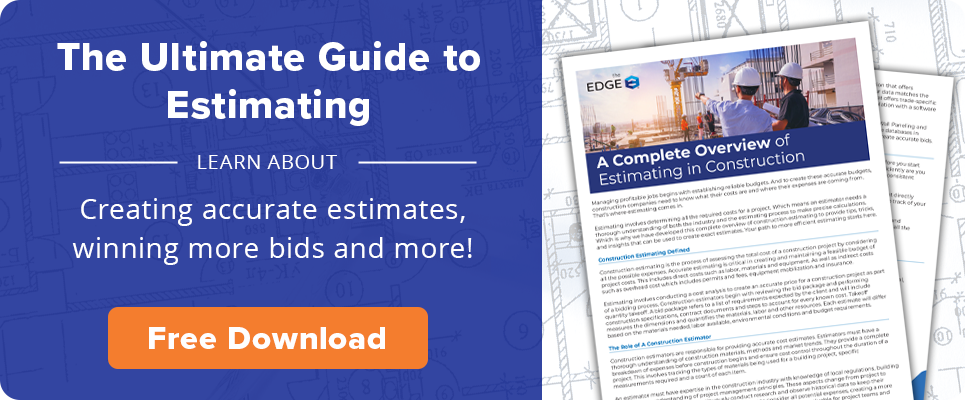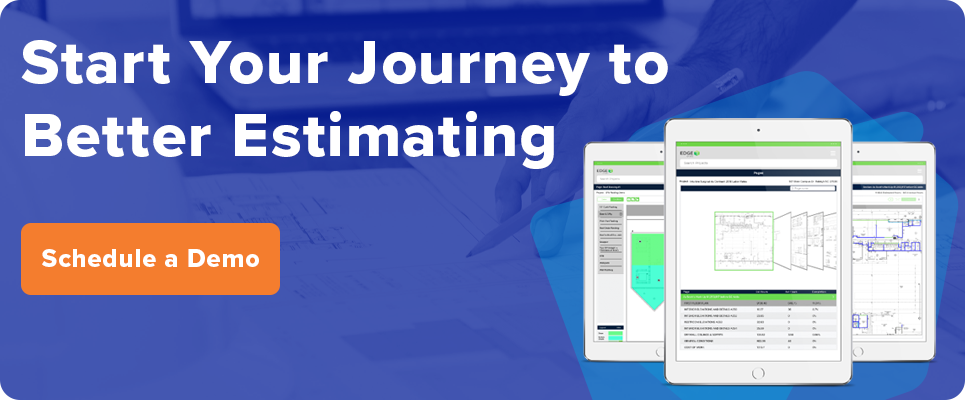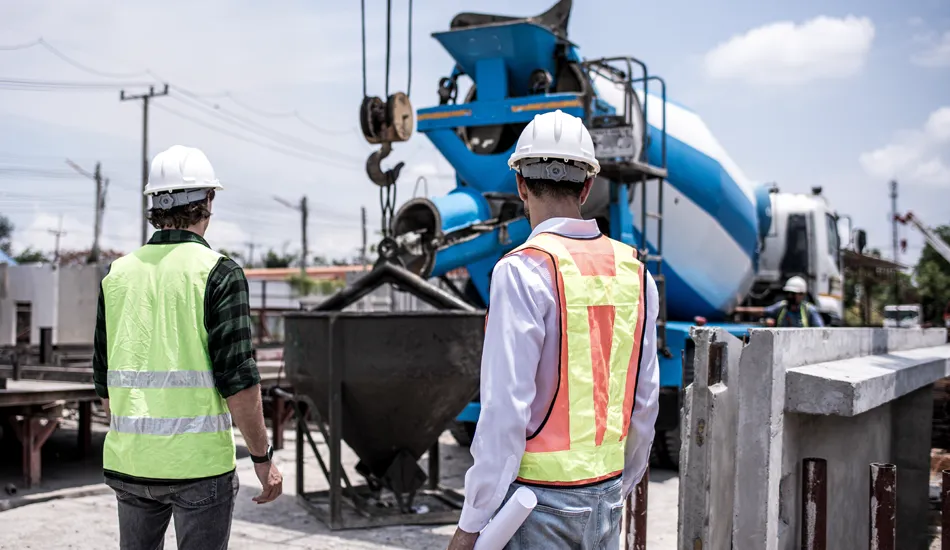
Construction estimating is a core feature of any project, vital for ensuring that the job is profitable. All construction companies should have an in-depth understanding of how estimating works and why it is important.
However, construction estimating is a complex process so it’s not uncommon for professionals to get confused and out of sorts. We’ve answered some of the biggest bidding questions to help anyone wanting some clarity.
What is The Point of Construction Estimating?
Construction cost estimating is the process of identifying all costs related to the scope of a project. This includes direct costs (materials, cost of labor and equipment) and indirect costs, such as overhead and insurance.
Through cost analysis, estimators can create a construction cost estimate that can be used to bid on new projects. The more accurate and fast this estimate is, the more likely a contractor will win the bid.

Why Should I Understand Construction Estimating?
Estimating is crucial for a construction project to be successful. It plays a critical role in determining the feasibility of a project by calculating all project-related costs. This also helps to maintain structure when unforeseen costs surface.
With the rising costs of construction materials, it is important that construction cost estimators know how to formulate reasonable estimates. For example, the average price of concrete has risen from 10.3% in 2022 to 11.2% in 2023, and is only expected to rise higher. An estimator needs to be aware of these trends and know when pricing data is outdated.
Calculating all project-costs is also necessary to create a budget, which acts as the roadmap to profitability. Any inaccuracies in the construction estimating process can lead to a project going over budget with forced cost-cutting potentially needing to be implemented.
What Types of Estimating Techniques Are There?
There are a few main techniques for estimating a project. Each method relies on its own process and has a different set of benefits and drawbacks.
Analogous estimating
Also known as ‘top-down’ estimating, this method looks at the big picture of a project, comparing to historical data on similar projects that have been completed to determine costs.
This method is fast and most useful only when general information is available but tends to be less accurate than other techniques.
Detailed estimating
Also known as ‘bottom-up’ estimating, this method acts as the reverse of analogous, where estimators look at the fine details of a project, identifying costs for each item to come up with a full construction estimate.
This method is very accurate but takes a very long time and requires very detailed project data.
Parametric estimating
Used for larger projects, this method looks at statistical models for cost predictions. These models use historical data and variable parameters like size, location and materials to calculate a construction cost estimate.
This is a highly accurate method of estimating but requires both comprehensive data and a powerful construction estimating software.
Assembly estimating
This method separates each ‘system’ of construction (i.e. foundation, framing, roofing, etc.) and estimates costs for each individually. Once costs are determined for each system, they are combined to create the total project cost.
This allows for more accurate estimating detail but takes more time and expertise to complete.
Unit cost estimating
The simplest and most common method, unit cost estimating calculates costs through standard units of measurement (e.g. square foot, cubic yards, tons). It is useful for fast rough estimates but should not be used for large or complex projects.
3-point estimating
This method creates three possible outcomes for a project estimate: best guess or average, worst-case (pessimistic) and best-case scenario (optimistic). It helps give a range of estimating expectations but is time consuming and can be unreliable depending on the data used.
What is The Cost Estimating Process?
The process for cost estimating may vary depending on the method a construction estimator goes with. Generally, it will follow these major steps:
- Bid package review: Provided by the client, the bid includes all relevant information related to the project, including the construction scope and timeline of work. An estimator will use these documents to determine all material and equipment needs for the project.
- Construction site visit: To assess site conditions. For example, if the site needs to be adjusted for construction or environmental regulations.
- Construction Takeoff: The provided blueprints are used to measure and calculate all quantities of materials, labor and equipment needed for the project.
- Cost analysis: Used to break down and price quantities of materials and equipment usage and mobility. Skilled estimators must solicit prices and compare them with potential suppliers to find accurate and reasonable prices.
- Evaluate Labor: Needed to break down quantity, role and hours for workers for the project. Skill level, productivity on previous projects and worker costs (wages, taxes, overtime, insurance, etc.) must be accounted for.
- Insurance/ Bonds: Contractors must be covered while working on a project. If additional coverage is needed, it must be factored into the estimate.
- Overhead calculations: This includes rent, permits and utilities. These indirect costs will not typically be visible within the original project bid.
- Profit and contingency planning: A contractor must be able to identify how much they can make from the project. Contingency should account for 5-10% of total project costs and be set aside for covering unforeseen costs.
- Finalization/ submittal: All costs must be thoroughly reviewed to ensure no discrepancies were missed. This will be submitted to the client and used for construction.
Because the estimating process is long and complex, it is important that every step is as accurate as possible, benefiting both the client and the contractor financially.
What Mistakes Should I Avoid When Cost Estimating?
When estimating a construction project there are many opportunities for mistakes. However, many of these mistakes are entirely avoidable if you are aware of them.
These include:
- Labor cost inaccuracies
- Inaccurate pricing for materials/supplies
- No risk assessment
- Failing to include overhead costs
- No contingency planning (including weather plans)
- Using generic items/assemblies for specific trades
Many of these common mistakes can be avoided with construction estimating software, where the risk of human error through manual record-keeping and calculation is reduced.
What is Cost Estimating Affected by Most?
Even though the process of estimating involves many different moving parts, there are a few critical elements that really affect the time, cost and effort of a project estimate.
- An ambiguous project scope can be tough to estimate without solid details. If you don’t know everything about the scope, you can’t account for everything.
- The quality of data or the information used to create the estimate, can lead to errors or omissions if the data is poor. Outdated data, such as old pricing for materials, can halt progress and raise costs, straining your construction budget.
- Depending on how complex a project is, the cost may need to rise for required skill levels for estimators as well as the length of time and energy that they will have to exert.
- The method of estimating can also greatly affect the estimating and bidding process. Some methods, like manual bidding, might be less accurate or detailed, making assumptions that could lead to increased costs.
What Can I Do to Make My Cost Estimating More Accurate?
Estimating accuracy can be achieved in several practical ways, including:
- Compare historical project data on similar projects
- Detailed quoting from different suppliers to compare pricing options
- Regularly update costs databases to have most recent information available
- When possible, use detailed techniques for estimating
- Maintain communication with clients and collaborate with experienced professionals for assistance
While all these tips are useful to keep estimating accurate, using construction estimating software is an easy and effective way to ensure estimating accuracy.
What Are The Advantages of Construction Estimating Software?
 There are many advantages to using construction estimating software that can help streamline every step of the process. These include:
There are many advantages to using construction estimating software that can help streamline every step of the process. These include:
- Detailed reports that show project estimates compared to real costs to help budgetary analysis.
- Advanced automation that reduces time spent on tasks like cost calculations, data entry and quantity takeoffs.
- Change order management to help keep projects running smoothly even when changes are needed.
- Trade specific databases which can be used to promote fast and accurate construction estimates.
- A built-in all-in-one system to coordinate estimating and takeoff so contractors don’t have to double-input data.
- Integration with accounting software.
- Access to the cloud to view your detailed estimates anywhere.
Combined, these features create a powerful system that contractors can leverage to their benefit when estimating a project. Using estimating software will result in faster, more accurate estimates that can help contractors increase their profit and win new projects.
How Do I Choose Which Estimating Software to Use?
When you are looking to implement estimating software into your construction business, it can be overwhelming to know how to decide. Start by first evaluating your company’s needs. Make sure to consider:
- The types of work you perform.
- Your business growth plan.
- The building codes you deal with.
An estimating software should have the essential construction estimating features needed for your work, such as:
- Trade-specific databases
- Automated reporting
- Change order management
- Built-in digital takeoff
- Cloud-based access
An estimating provider should offer scalability to match your company’s workload and growth, as well as the ability to integrate with other systems, such as accounting.
Look for high-quality software support that can be accessed at any time with training courses for software use, as well as a positive and reliable history in the construction industry.

Win More Projects And Boost Your Construction Estimating With The EDGE®
It is critical that construction estimating is understood for projects to be successful. Since the construction process is so long and complex, many questions are often asked.
Accurate construction estimating consists of identifying all necessary and potential costs related to any given project. It is important because it determines if a project is feasible and how a contractor should delegate resources.
Accuracy is critical for every step of estimating, but construction estimating software can help ensure accuracy that manual methods could not.
To get ahead of the competition and boost your projects, consider The EDGE, a robust estimating software solution.
The EDGE® offers comprehensive features for trades in:
- Acoustical
- Concrete
- Drywall
- EIFS
- Fireproofing
- Flooring
- Painting
- Roofing
- Wall panels
- Waterproofing
These features include all-in-one takeoff and estimating, smart Labor® technology for auto calculations, cloud access for mobile reporting and electronic pricing with Vendor Quote.
To learn more, contact a specialist today!






